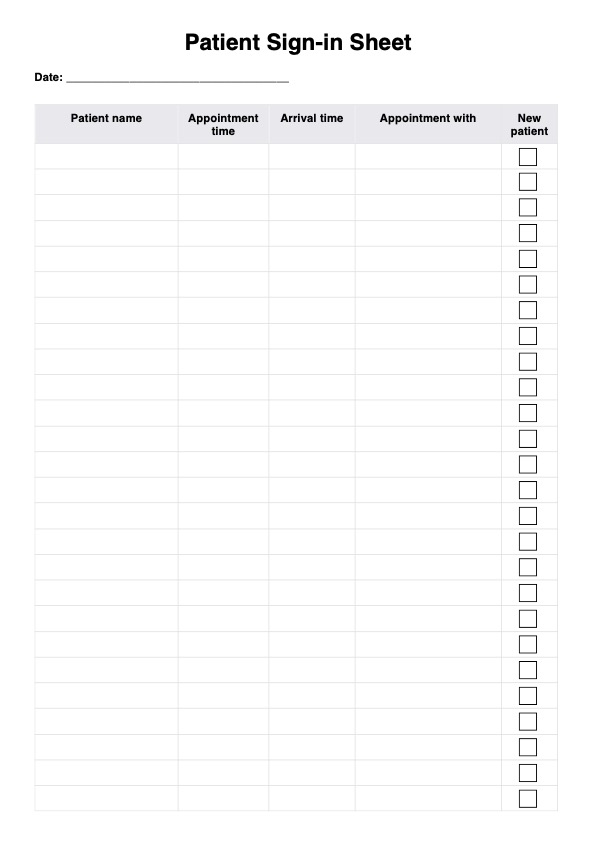No, a Patient Sign-in Sheet is not a HIPAA violation, provided it does not gather any information related to the patient's medical history or the reason they are seeing the practitioner. Taking the patient's name, appointment time, and practitioner name is acceptable under HIPAA and constitutes an incidental disclosure. Similarly, calling out patients' names in a waiting room is an incidental disclosure as well and is not a HIPAA violation either.

Patient Sign In Sheet
Maximize the efficiency of your clinic’s waiting room and meet your legal privacy requirements with this HIPAA-compliant Patient Sign-in Sheet.
Patient Sign In Sheet Template
Commonly asked questions
If you have no legitimate reason to keep patient sign-in sheets, then destroying them at the end of each day is perfectly reasonable. You might choose to destroy the sign-in sheet if the information is captured in another way such as an appointment encounter record. If the patient-sign in form is to serve as a legitimate record of attendance at your clinic, rather than just a day-to-day management tool, then you should treat it like any other medical record and store it for 5-10 years, with the exact time depending on your state’s laws.
The sign-in sheet is meant to be filled in by patients to show they were physically present at the clinic on that day. If they miss their appointment, you should leave the sign-in form blank to reflect that they were not present.
EHR and practice management software
Get started for free
*No credit card required
Free
$0/usd
Unlimited clients
Telehealth
1GB of storage
Client portal text
Automated billing and online payments











